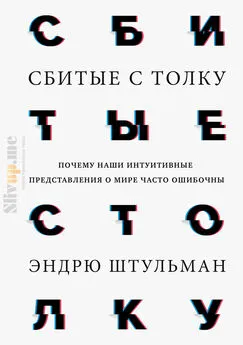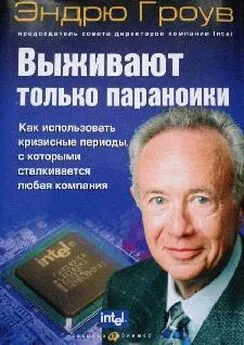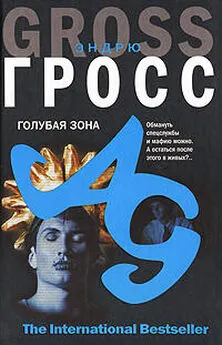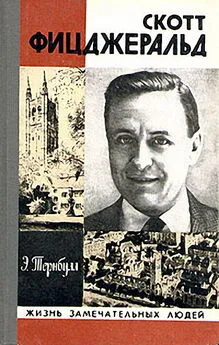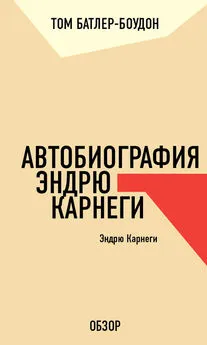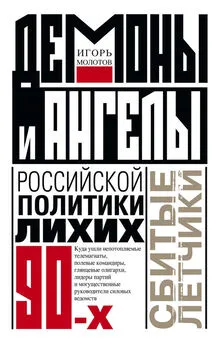Эндрю Штульман - Сбитые с толку
- Название:Сбитые с толку
- Автор:
- Жанр:
- Издательство:Манн, Иванов и Фербер
- Год:2020
- Город:Москва
- ISBN:9785001177616
- Рейтинг:
- Избранное:Добавить в избранное
-
Отзывы:
-
Ваша оценка:
Эндрю Штульман - Сбитые с толку краткое содержание
Сбитые с толку - читать онлайн бесплатно ознакомительный отрывок
Интервал:
Закладка:
Spelke, E. S., Breinlinger, K., Macomber, J., and Jacobson, K. (1992). Origins of knowledge. Psychological Review, 99, 605–632.
Spelke, E. S., and Kinzler, K. D. (2007). Core knowledge. Developmental Science, 10, 89–96.
Spencer, S. J., Steele, C. M., and Quinn, D. M. (1999). Stereotype threat and women’s math performance. Journal of Experimental Social Psychology, 35, 4–28.
Springer, K. (1995). Acquiring a naive theory of kinship through inference. Child Development, 66, 547–558.
Springer, K., Ngyuen, T., and Samaniego, R. (1996). Early understanding of age-and environment-related noxiousness in biological kinds: Evidence for a naive theory. Cognitive Development, 11, 65–82.
Stavy, R., and Wax, N. (1989). Children’s conceptions of plants as living things. Human Development, 32, 88–94.
Steinberg, M. S., Brown, D. E., and Clement, J. (1990). Genius is not immune to persistent misconceptions: Conceptual difficulties impeding Isaac Newton and contemporary physics students. International Journal of Science Education, 12, 265–273.
Stenn, F. (1980). Nurture turned to poison. Perspectives in Biology and Medicine, 24, 69–80.
Stevenson, R. J., Oaten, M. J., Case, T. I., Repacholi, B. M., and Wagland, P. (2010). Children’s response to adult disgust elicitors: Development and acquisition. Developmental Psychology, 46, 165–177.
Straatemeier, M., van der Maas, H. L., and Jansen, B. R. (2008). Children’s knowledge of the earth: A new methodological and statistical approach. Journal of Experimental Child Psychology, 100, 276–296.
Sylvia, C., Novak W. (1997). A change of heart: A memoir. New York: Time Warner.
Thagard, P (1992). Conceptual revolutions. Princeton, NJ: Princeton University Press.
Thagard, P. (1999). How scientists explain disease. Princeton, NJ: Princeton University Press.
Thagard, P. (2014). Explanatory identities and conceptual change. Science and Education, 23, 1531–1548.
Tomasello, M., and Carpenter, M. (2007). Shared intentionality. Developmental science, 10, 121–125.
Tomasello, M., and Herrmann, E. (2010). Ape and human cognition: What’s the Difference? Current Directions in Psychological Science, 19, 3–8.
Toulmin, S., and Goodfield, J. (1982). The architecture of matter. Chicago: University of Chicago Press.
Trend, R. D. (2001). Deep time framework: A preliminary study of UK primary teachers’ conceptions of geological time and perceptions of geoscience. Journal of Research in Science Teaching, 38, 191–221.
Tufte, E. R. (2001). The visual display of quantitative information (2nd ed.). Cheshire, CT: Graphics Press.
Перевод книги Эдварда Тафти «Представление информации» на русский язык: http://envisioninginformation.daiquiri.ru/.
United Nations Educational, Scientific and Cultural Organization (1970). The race concept: Results of an inquiry. Westport, CT: Greenwood Press.
Van der Linden, S., Leiserowitz, A. A., Feinberg, G. D., and Maibach, E. W. (2015). The scientific consensus on climate change as a gateway belief: Experimental evidence. PloS One, 10, e0118489.
Venville, G., Gribble, S. J., and Donovan, J. (2005). An exploration of young children’s understandings of genetics concepts from ontological and epistemological perspectives. Science Education, 89, 614–633.
Vosniadou, S. (1994a). Capturing and modeling the process of conceptual change. Learning and Instruction, 4, 45–69.
Vosniadou, S. (1994b). Universal and culture-specific properties of children’s mental models of the earth. In L. A. Hirschfeld and S. A. Gelman (eds.), Mapping the mind: Domain specificity in cognition and culture, 412–430. Cambridge, UK: Cambridge University Press.
Vosniadou, S., and Brewer, W. F. (1987). Theories of knowledge restructuring in development. Review of Educational Research, 57, 51–67.
Vosniadou, S., and Brewer, W. F. (1992). Mental models of the earth: A study of conceptual change in childhood. Cognitive Psychology, 24, 535–585.
Vosniadou, S., and Brewer, W. F. (1994). Mental models of the day/night cycle. Cognitive Science, 18, 123–183.
Vosniadou, S., Skopeliti, I., and Ikospentaki, K. (2004). Modes of knowing and ways of reasoning in elementary astronomy. Cognitive Development, 19, 203–222.
Vosniadou, S., Skopeliti, I., and Ikospentaki, K. (2005). Reconsidering the role of artifacts in reasoning: Children’s understanding of the globe as a model of the earth. Learning and Instruction, 15, 333–351.
Ware, E. A., and Gelman, S. A. (2014). You get what you need: An examination of purpose-based inheritance reasoning in undergraduates, preschoolers, and biological experts. Cognitive Science, 38, 197–243.
Waxman, S., Medin, D., and Ross, N. (2007). Folkbiological reasoning from a cross-cultural developmental perspective: Early essentialist notions are shaped by cultural beliefs. Developmental Psychology, 43, 294–308.
Webb, N. (1993). Helping bereaved children: A handbook for practitioners. New York: Guilford.
Wegener, A. (1929/1966). The origin of continents and oceans. New York: Dover.
Wellman, H. M., and Gelman, S. A. (1992). Cognitive development: Foundational theories of core domains. Annual Review of Psychology, 43, 337–375.
White, B. Y. (1984). Designing computer games to help physics students understand Newton’s laws of motion. Cognition and Instruction, 1, 69–108.
Wicker, B., Keysers, C., Plailly, J., Royet, J. P., Gallese, V., and Rizzolatti, G. (2003). Both of us disgusted in my insula: The common neural basis of seeing and feeling disgust. Neuron, 40, 655–664.
Widen, S. C., and Russell, J. A. (2013). Children’s recognition of disgust in others. Psychological Bulletin, 139, 271–299.
Willis, B. (1910). Principles of paleogeography. Science, 31, 241–260.
Winer, G. A., and Cottrell, J. E. (1996). Effects of drawing on directional representations of the process of vision. Journal of Educational Psychology, 88, 704–714.
Winer, G. A., Cottrell, J. E., Karefilaki, K. D., and Chronister, M. (1996). Conditions affecting beliefs about visual perception among children and adults. Journal of Experimental Child Psychology, 61, 93–115.
Winer, G. A., Cottrell, J. E., Karefilaki, K. D., and Gregg, V. R. (1996). Images, words, and questions: Variables that influence beliefs about vision in children and adults. Journal of Experimental Child Psychology, 63, 499–525.
Wiser, M., and Amin, T. (2001). «Is heat hot?» Inducing conceptual change by integrating everyday and scientific perspectives on thermal phenomena. Learning and Instruction, 11, 331–355.
Wiser, M., and Carey, S. (1983). When heat and temperature were one. In D. Gentner and A. L. Stevens (eds.), Mental models, 267–297. Hillsdale, NJ: Erlbaum.
Zacharia, Z. C., and Olympiou, G. (2011). Physical versus virtual manipulative experimentation in physics learning. Learning and Instruction, 21, 317–331.
Zaitchik, D., Iqbal, Y., and Carey, S. (2014). The effect of executive function on biological reasoning in young children: An individual differences study. Child Development, 85, 160–175.
Zaitchik, D., and Solomon, G. E. (2008). Animist thinking in the elderly and in patients with Alzheimer’s disease. Cognitive Neuropsychology, 25, 27–37.
Zaitchik, D., and Solomon, G. E. (2009). Conservation of species, volume, and belief in patients with Alzheimer’s disease: The issue of domain specificity and conceptual impairment. Cognitive Neuropsychology, 26, 511–526.
Zamora, A., Romo, L. F., and Au, T. K. F. (2006). Using biology to teach adolescents about STD transmission and self-protective behaviors. Journal of Applied Developmental Psychology, 27, 109–124.
Zimmerman, C., and Cuddington, K. (2007). Ambiguous, circular and polysemous: Students’ definitions of the «balance of nature» metaphor. Public Understanding of Science, 16, 393–406.
Zuger, A. (2003, March 4). «You’ll catch your death!» An old wives’ tale? New York Times , F1.
Благодарности
Выше я писал, что обучение противоречащим интуиции научным идеям похоже на «корабль Нейрата», который приходится перестраивать и переделывать в море, потому что он оказался непригодным к плаванию. Это хорошая метафора и для моей книги. Ее пришлось перестраивать и переделывать несколько раз в процессе написания, и я не справился бы с этим без советов и помощи многих друзей и коллег.
Во-первых, это те, без кого не состоялся бы спуск этого корабля на воду. Я глубоко признателен Полу Блуму, Элисон Гопник, Стиву Пинкеру, Майклу Шермеру и Карло Вальдесоло за то, что они помогали мне сориентироваться в море литературных агентов и издательств профессиональной литературы. Особенно я благодарен Стиву Пинкеру, который дал мне неоценимые советы о том, когда и как писать книгу по моей специальности, и ввел меня в этот незнакомый мир.
Во-вторых, я хочу поблагодарить тех, кто увидел в этой работе потенциал и вместе со мной сделал ее достойной «выхода в море»: Макса Брокмана, Ти-Джея Келлехера и Хелен Бартелеми. Макс, литературный агент, очень помог отточить и сформулировать мои идеи. Ти-Джей, мой редактор, сделал рукопись интереснее и понятнее. А благодаря Хелен, помощнику редактора, я законным образом получил иллюстрации.
В-третьих, я благодарен людям, которые прочитали черновики моей рукописи. Это Макс Раттнер, Шаранг Тику, Джош Валькарсель, Андреа Вийалобос и Нил Янг. Особая благодарность Шарангу, Андреа и Нилу: они прочли всю книгу целиком, и их комментарии позволили сделать ее значительно лучше.
Наконец, Иэн Силверстейн и Саммер Пит помогли моей книге стать визуально привлекательнее. Иэн отвечал за картинки, схемы и изображения мозга, а Саммер иллюстрировал задачи, материалы и составлял графики. Их рисунки живее и интереснее, чем то, что я рисовал в воображении, пока не привлек их к работе.
Читать дальшеИнтервал:
Закладка:
